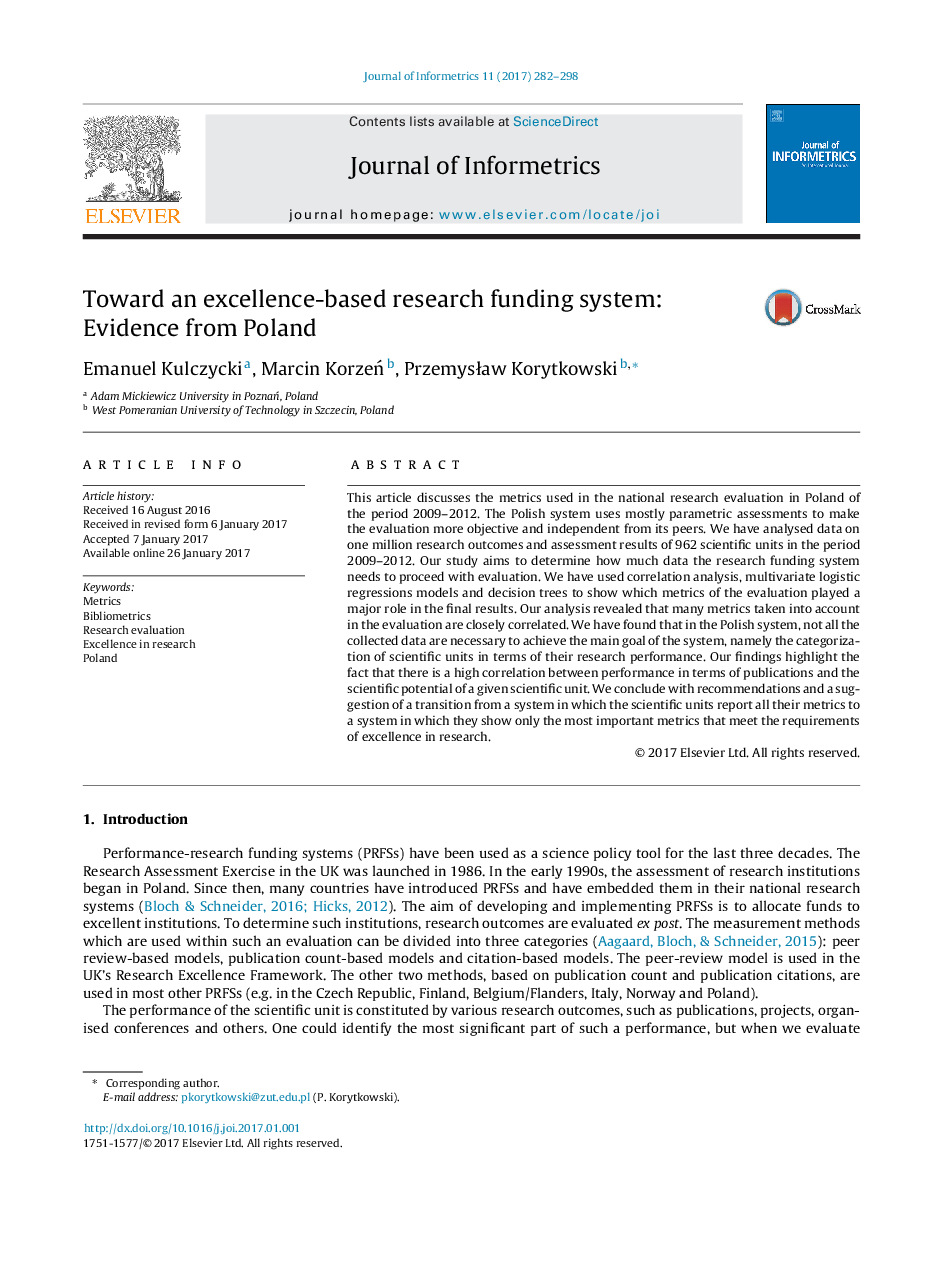| Article ID | Journal | Published Year | Pages | File Type |
|---|---|---|---|---|
| 4968125 | Journal of Informetrics | 2017 | 17 Pages |
â¢The article discusses the metrics used in the national evaluation in Poland.â¢We analyze data on one million research outcomes of 962 scientific units.â¢The Polish evaluation system has gathered too much data.â¢There is a high correlation between the publications and the scientific potential.â¢The Polish evaluation system can be simplified.
This article discusses the metrics used in the national research evaluation in Poland of the period 2009-2012. The Polish system uses mostly parametric assessments to make the evaluation more objective and independent from its peers. We have analysed data on one million research outcomes and assessment results of 962 scientific units in the period 2009-2012. Our study aims to determine how much data the research funding system needs to proceed with evaluation. We have used correlation analysis, multivariate logistic regressions models and decision trees to show which metrics of the evaluation played a major role in the final results. Our analysis revealed that many metrics taken into account in the evaluation are closely correlated. We have found that in the Polish system, not all the collected data are necessary to achieve the main goal of the system, namely the categorization of scientific units in terms of their research performance. Our findings highlight the fact that there is a high correlation between performance in terms of publications and the scientific potential of a given scientific unit. We conclude with recommendations and a suggestion of a transition from a system in which the scientific units report all their metrics to a system in which they show only the most important metrics that meet the requirements of excellence in research.
